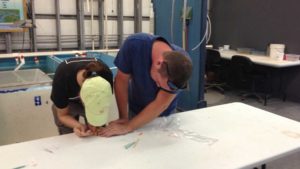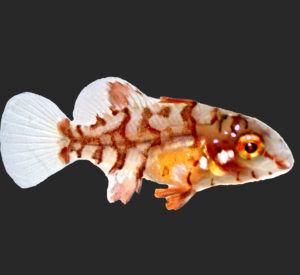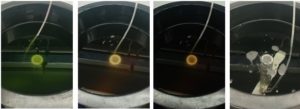The UF/IFAS Indian River Research and Education Center, with Rising Tide Conservation, is pleased to announce the successful aquaculture of the banded butterflyfish, Chaetodon striatus!
This success was achieved by the hard work of Dr. Cortney Ohs, Benjamin Lovewell, Paul Schlict, and Fred Shopnitz at the University of Florida Indian River Research and Education Center with research funding from Rising Tide Conservation.
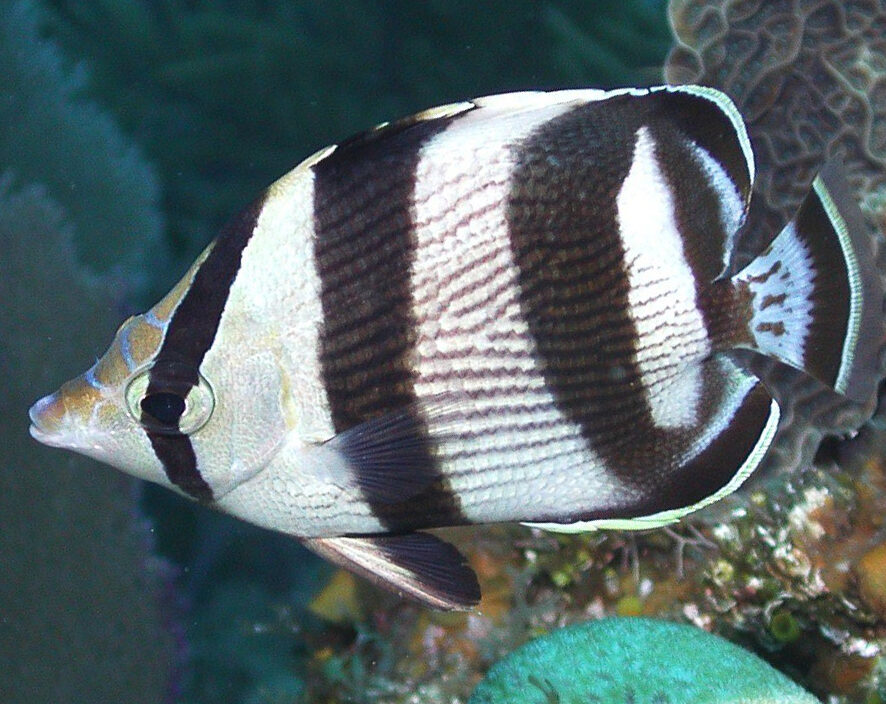
Family: Chaetodontidae (Butterflyfishes)
Genus: Chaetodon
Common names: Banded Butterflyfish, Banded Mariposa, Butterbum, Portuguese Butterfly
Banded butterflyfish, Chaetodon striatus, are native to the tropical and subtropical western Atlantic Ocean, and its range extends from Massachusetts in the United States, to Santa Catarina in Brazil, and includes the Caribbean Sea, the Gulf of Mexico, and Bermuda.
Banded butterflyfish coloring is silvery with a slender black bar passing through its eye, two wide black bars in mid-body, and a third wide bar that starts on the rear of the dorsal fin and continues to the caudal peduncle. The pelvic fins and the caudal fin are black.
The banded butterflyfish is usually seen on reefs either singly or in pairs, but is occasionally observed in groups up to twenty individuals.
The diet is mainly small invertebrates, crustaceans, coral polyps, polychaete
worms, and various eggs. Banded butterflyfish can act as cleaners, removing external parasites from larger fish.
Banded butterflyfish do not reproduce in groups but form monogamous pairs before this spawning behavior. They are multi-batch spawners which broadcast eggs and sperm into the water column.
Aquaculture History
No reports were found regarding captive spawning or larval rearing of banded butterflyfish.
Aquaculture Process
In 2015, a pair of banded butterflyfish were collected by Dynasty Marine in the Florida Keys and were transported to the University of Florida Indian River Research and Education Center in Fort Pierce, FL. The pair was stocked into a 1500 L circular tank with a recirculating aquaculture system with an external egg collector and were provided large pvc pieces for habitat. Lighting was controlled to 13:11 light dark cycle with an additional hour of building light simulating a sunrise and sunset.
After three years, only a few spawns with no fertilization had occurred, so the banded butterflyfish were moved into a 2700 L circular tank with a recirculating aquaculture system and external egg collector. They were combined with a pair of spotfish butterflyfish (Chaetodon ocellatus), and several rock beauty angelfish (Holacanthus tricolor).
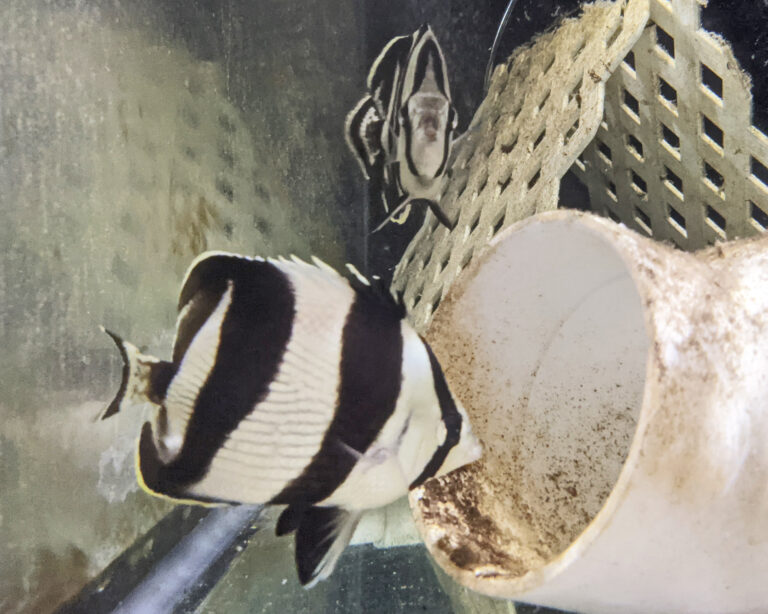
Spawning and Egg Collection
After several months, spawning was observed with 63 spawns (1,000-28,000 eggs/spawn) occurring. Of these 54 spawns were only unfertilized eggs while 9 had partially fertilized eggs (0.1-86.4% fertilization). It was unknown which species of butterflyfish was spawning but all of the eggs always appeared to be the same species.
On February 4, 2019, about 20,000 eggs were collected with 86.4% fertilization were collected with a water temperature of 26°C. Fertilized eggs were stocked into a 104 L fiberglass tank with black walls and bottoms, equipped with a screen to retain eggs and larvae and allow uneaten copepods and rotifers to flush out of the tank. This tank was part of a larger recirculating aquaculture system used for the entire larval culture room. The recirculating aquaculture system was equipped with an 80 watt UV sterilizer, two bag filters with 50 and 10 μm felt bags, a protein skimmer and trickle filter.
Water exchange within the larval tank was turned off during the day and increased to approximately five tank turnovers per night. This was done to maintain live food densities during the day and flush out uneaten food at night. Lighting was provided by fluorescent lights with a 16:8 light:dark cycle.
Larval Development
Hatching occurred within 24 hours with water temperatures of 26-27°C. Mouthparts were present by 3 dph.
Swim bladder inflation occurred on 12-16 dph and
Flexion occurred from 17-18 dph.
Faint coloration to the bands were visible 50 dph
They were settled and more benthically oriented by 52 dph so pvc structure was added to the tank.
Bands were dark and an obvious tail spot was present 57 dph.
Larval Feeding/ Daily Feeding Protocol
The feeding protocols used to successfully culture the banded butterflyfish included greening water with live Tisochrysis lutea algae, feeding enriched rotifers (Brachionus plicatilis), copepod (Parvocalanus crassirostris) nauplii, enriched Artemia nauplii, and Otohime dry diets. Rotifers and Artemia nauplii were enriched with N-Rich High Pro (Reed Mariculture).
Live T-iso algae was used to green the water to approximately 200,000 cells/mL from 1-40 dph.
First feeding was 3 dph and larvae received 19 rotifers/mL once
daily and 8 parvo/mL twice daily.
Feeding from 4-13 dph larvae received 10 rotifers/mL once
daily and 8 parvo/mL twice daily.
Feeding from 14-29 dph larvae received 15 rotifers/mL once
daily and 8 parvo/mL in the AM and 12 parvo/mL in the PM.
Feeding from 30-35 dph larvae received 13-25 rotifers/mL once
daily and 1-3 parvo/mL twice daily.
Unenriched newly hatched Artemia nauplii were provided at 0.02/mL once daily from 23-28 dph to introduce larvae to Artemia. From 29 dph onwards,
enriched Artemia was fed ad libitum 3x/day.
Otohime dry diet was fed ad libitum from 25 dph onwards.
Starting with A1 and increasing to C1 in particle size.

